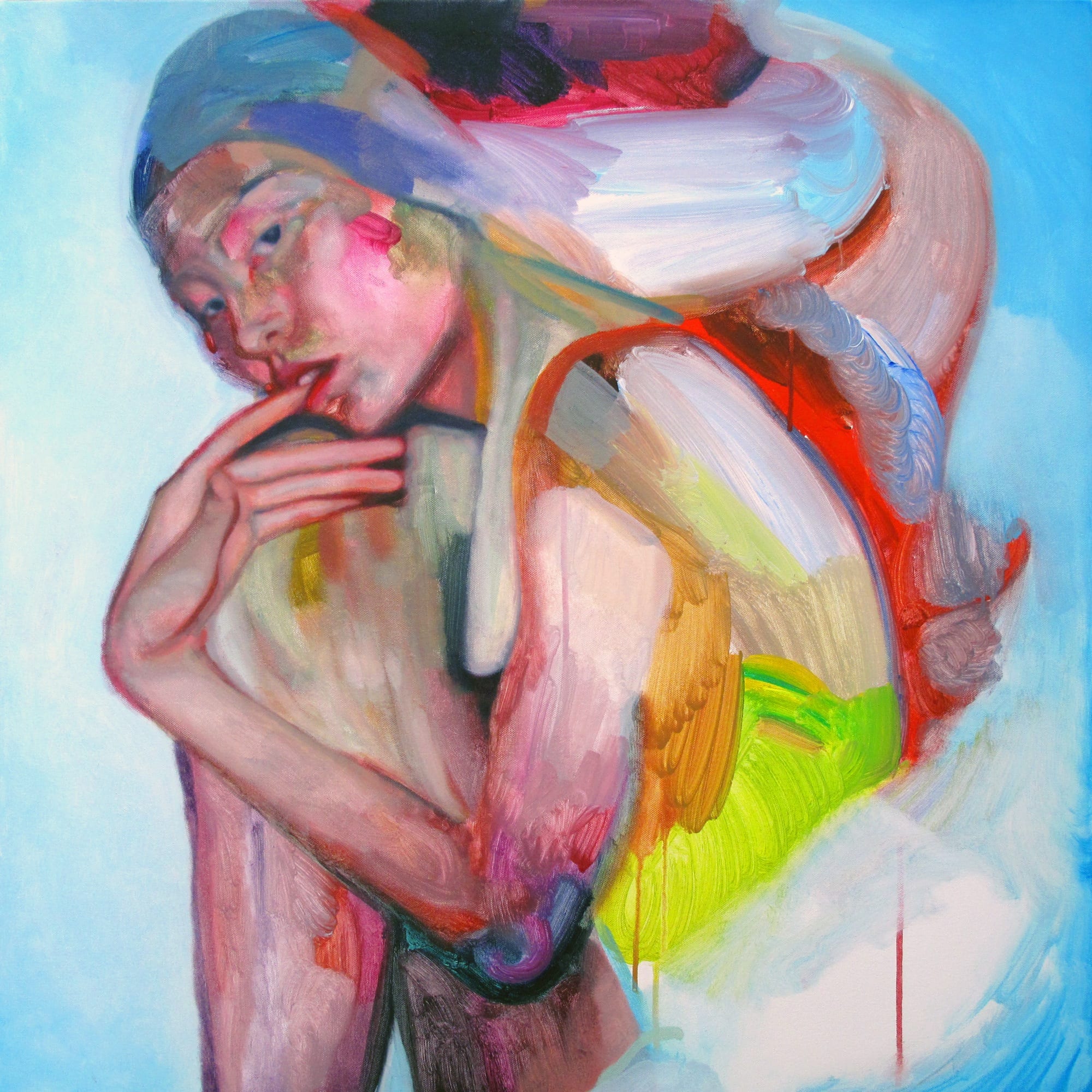While based on opposite ends of the country, Turning Art and Installation practice a shared commitment to fostering talent and encouraging art enthusiasts to become collectors. In our ongoing collaboration with TurningArt, we explore the practice, philosophy, and works of Turning Artists. This week, we turn our TurningArtist spotlight to Brooklyn-based oil painter Winston Chmielinski.

Define the moment when you knew you wanted to pursue art professionally.
I’ve been stubborn since day one. Doing one’s work takes absolute commitment and there really isn’t room for much else. I count my blessings for the feasibility of that commitment, too, in a professional sense.
Your compositions present equal attention to landscape and to the human form. They play between the figurative and the abstract. Where do you look for inspiration?
Things on the street, in parks, on trees… Their twists and edges can evoke something jarringly figurative. I try to embody those moments so that the hand subverts the eye while I paint. I also reference a lot of images from Tumblr and collect amateur photos from a few different archive sites.
What facets of the human body do you enjoy painting?
I tend to skip over identifying characteristics in any figurative work I paint. Then I pinch what’s left into hands, feet, faces. That’s my literal experience as a body, and in purely expressive terms, rearrangement and deformation of anatomy can chance upon an almost hyper-level of aliveness.
The color palette that you have adopted is incredibly rich and vibrant. Do you find that you use particular colors in in your work to convey a particular emotion?
It’s hard to say. I think of colors in relation to one another, so value is much more important than hue. That said I have a pretty steady palette, so it’s obvious when I’ve just bought a new color- it gets everywhere!
There is a gestural quality to the application of the paint, a distinctive fluidity. Your hand is present in the composition without overwhelming the visual plane. How do you feel your style has evolved?
Every painting has to present a challenge so that I get a little bit frenzied and worked up. I don’t know what the final painting will look like, and the best I can hope for is reaching an extreme, or even implausible, balance. I want that tension to ring out in every part of the canvas. My early work was more guarded, because I was still preciously preoccupied with “getting it right.”
The tradition of oil painting is deeply rooted in art history. Which artists, either working with oil or other mediums have inspired your practice? How did you arrive at oil as the primary medium in your work? Why do you think it’s important to work in oil painting now when so few artists dedicate their practice to it?
Every stroke is loaded with the whole of art history. I find that exciting, because no painter today is reinventing the medium— it’s all been done— and so there has to be something more in a painting than novelty or cleverness. Cecily Brown and Tala Madani make sublime work, and both are engaging with the figure too.
Many of your pieces have a cinematic quality about them, particularly the works that represent figures. The perspective is intimate and yet somewhat askew so as not to reveal too much information about the subject. Has cinema played a role in your artistic practice?
Backlit photos on the computer are like stills from a movie, or staged reenactments and I’ve always painted from them. The relation to cinema might be more indirect: a series of photos with no set chronology can make up a single painting, so in a sense there’s the linearity of a film along with the verticality of superimpositions.
What has your experience been working with TurningArt? With the gallery system shifting, do you feel that this new style of representation is more successful in reaching new collectors?
I paint for my work to be seen, and TurningArt puts that work on walls; living with an artwork is incomparable to looking at it on the screen, so I applaud the affordable and intuitive model that Turning Art has developed to benefit artists and collectors alike.
